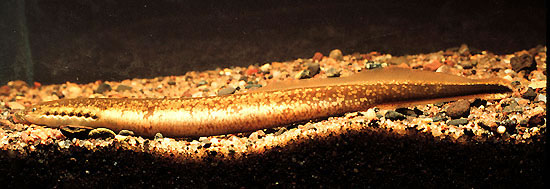Facts About Northern brook lamprey
The northern brook lamprey is a remarkable freshwater fish belonging to the Petromyzontidae family, closely related to the silver lamprey. Unlike some of its relatives, it is non-parasitic and possesses a distinctive disc-shaped mouth designed for suction. These jawless fish have a gray-brown coloration and feature a dorsal fin that extends to their caudal fin.
The northern brook lamprey inhabits the Midwest and northeastern regions of the United States, as well as parts of Canada. They thrive in diverse habitats: their larvae, known as ammocoetes, burrow into sediment, while the adults prefer swimming in sand or gravel substrates in fast-moving streams.
During their larval stage, northern brook lampreys feed on detritus and microscopic organisms. Interestingly, adult lampreys do not feed at all. Their reproductive process is quite dramatic—they spawn in groups, lay their eggs, and then die shortly afterward. They begin spawning at around six years old, progressing through a complex life cycle that includes metamorphosis and a juvenile drifting phase before maturing into adults.
Unfortunately, their population is declining. Habitat degradation, the use of lampricides, and competition from invasive sea lampreys pose significant threats. In states such as Pennsylvania and Minnesota, they are classified as a species of special concern. Lampricides, used to control sea lamprey populations, have unintentionally harmed various lamprey species, including the northern brook lamprey. To ensure the survival of these unique fish, it is crucial to enhance conservation efforts.

 United States
United States